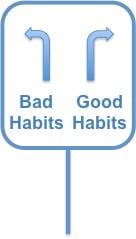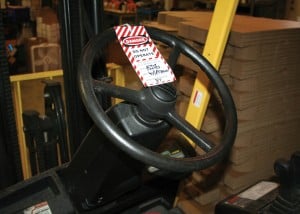
In the book, TRUSTED TO THRIVE, it talks about how we are biologically programmed to want to be with people and work together, as we instinctively know it helps our...
 Researchers have found that institutional habits exist in almost every organisation. Interestingly, one of the main differences between a company that outperforms on safety versus a poor performing company with safety are their safety habits.
Researchers have found that institutional habits exist in almost every organisation. Interestingly, one of the main differences between a company that outperforms on safety versus a poor performing company with safety are their safety habits.
Just like with an individual, good habits makes a person more efficient, energetic and happy with their life. While poor habits can result in being overweight, unfit, unhealthy and overwhelmed.
Companies are no different. Organisations that instill great safety habits ensure a great safety culture. While companies that don't even bother to work on safety habits, have a poor safety culture.
As the academic Geoffrey Hodgson states "Routines are the organisational analogue of habits".
Back in 1987, Paul O'Neill was knighted the new CEO of Alcoa. At the time, Alcoa was in a mess. The unions were unhappy and so were thousands of workers who regularly went on strike. The company had been steadily losing money year after year with failed product lines, poor safety and productivity.
Interestingly, as Charles Duhigg writes in The Power of Habit, O'Neill believed that changing organisational habits were key to transforming a company.
In his previous roles in Government, O'Neill learnt to become a master habit changer. O'Neill said: "Every time I looked at a different part of the government, I found these habits that seemed to explain why things were either succeeding or failing. The best agencies understood the importance of routines. The worse agencies were headed by people who never thought about it and then wondered why no-one followed their orders".
Known as keystone habits, some habits are more important than others because they have the power to start a chain reaction, shifting other patterns as they move through our lives. Keystone habits influence how we work, eat, play, live, spend, and communicate. Keystone habits start a process that, over time, transforms everything, so that when people start changing their habits, they start changing other unrelated patterns in their lives, often unwittingly. Research has found that families who eat dinner every night together have children with better homework skills, greater emotional control more confidence and better grades. While those who start exercising regularly. start to eat better and become more productive at work.
O'Neill said in the book The Power of Habit : "I knew I had to transform Alcoa. But you can't order people to change. That's not how the brain works. So I decided I was going to start by focusing on thing. If I could disrupt the habits around one thing, it would spread throughout the entire company".
To improve safety at Alcoa, O'Neill had to change the habits that matter most to people. So his first choice was to focus on safety and to design an audacious goal to motivate people: Zero injuries.
Working on improving keystone habits does not mean that you have to focus on getting every single thing right. Instead, by identifying a few key priorities and leveraging them as much as possible, they can be levers of change to create a powerful domino effect.
Intuitively, O'Neill changed safety behaviours by focusing on a safety plan that centred around the habit loop:
Staff quickly learnt that if they wanted to get promoted, they had to start reporting and solving injuries. Meanwhile, O'Neill made sure that everyone believed that Alcoa could be a safe place to work.
This was all that O'Neill focused on to transform Alcoa. He introduced a new process to report an injury. While it might seem quite rudimentary, it's effects were widespread.
This is because it made it important for staff at all levels to communicate and work together to find solutions. This had a massive effect with one of the interesting results being an online safety reporting system which made Alcoa the first company to develop a worldwide email system.
It also meant that the hierarchy fell part and all workers were able to call O'Neill at any time about safety.
As Alcoa's safety patterns shifted, other aspects of the company starting changing with incredible speed. In the past, unions had fought against measuring productivity of workers, but it was now fully embraced because it helped everyone to figure out where in the manufacturing process things were not working. For years, managers had resisted giving workers the authority to shut down a production line when the pace was to fast. Now, finally this was accepted because it stopped injuries from occurring.
Just like how changing a personal habit, overhauls a wide range of habits (for example: starting an exercise program means automatically improving your diet and smoking less). Alcoa staff also found that improved safety habits improved other parts of individual's lives. Employees became safety evangelists and began to stop other workers on the street who were not following correct safety procedures and provided advice on the best way to proceed.
Safety Measures = Profitability
O'Neill never promised improved profits, yet, the company became more profitable. As safety improved, costs decreased. Raw materials were no longer spilled so frequently, broken down equipment was replaced which resulted in higher quality products being manufactured, as equipment malfunctions affected product quality detrimentally.
By focusing on safety, O'Neill inadvertently discovered a keystone habit that just by putting in the spotlight and improving, it enabled other habits to flourish by creating new structures and establishing a culture shift, whereby change became contagious.
What keystone habits are lurking in your company that you can improve to create a wave of change throughout your organisation?

In the book, TRUSTED TO THRIVE, it talks about how we are biologically programmed to want to be with people and work together, as we instinctively know it helps our...

When it comes to warnings about potential dangers or giving people an important instruction on site, you have to rely on labels and signs to communicate. A sign's...